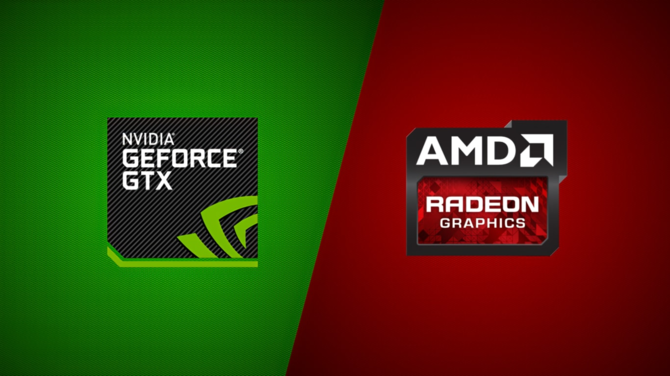Introduction:
When it comes to the world of graphics processing units (GPUs), two names stand out prominently: AMD and NVIDIA. These technology powerhouses have been at the forefront of GPU innovation for years, captivating gamers, content creators, and professionals alike. In this article, we dive into the perennial debate and explore the strengths and weaknesses of AMD and NVIDIA, attempting to determine which one holds the crown as the superior choice.Performance and Power Efficiency:
One of the most critical factors when evaluating a GPU is its performance. Both AMD and NVIDIA have made significant strides in this area, continually pushing the boundaries of what is possible. Historically, NVIDIA has held a slight edge in terms of raw performance, with its high-end offerings consistently outperforming AMD's counterparts. However, AMD's recent GPUs, such as the Radeon RX 6000 series, have narrowed the gap considerably, delivering exceptional performance for gaming and productivity tasks.Power efficiency is another aspect that cannot be overlooked. Here, AMD has made significant strides in recent years, particularly with its RDNA 2 architecture, which powers the latest Radeon GPUs. NVIDIA, on the other hand, has always placed a strong emphasis on power efficiency, making its GPUs an attractive option for those conscious of energy consumption. While both companies offer efficient solutions, NVIDIA's long-standing focus on power optimization gives it a slight edge in this category.
Software and Features:
Beyond raw performance, the software ecosystem surrounding a GPU is crucial. NVIDIA's software suite, including GeForce Experience and its Game Ready drivers, is widely regarded as one of the best in the industry. These tools provide gamers with a seamless experience, optimizing game settings and keeping drivers up to date effortlessly. Additionally, NVIDIA's exclusive technologies, such as DLSS (Deep Learning Super Sampling) and RTX Ray Tracing, have set new standards for visual fidelity and performance.AMD, on the other hand, has made significant strides with its software offerings. Radeon Software Adrenalin Edition provides a comprehensive suite of features, including Radeon Boost, Anti-Lag, and Radeon Image Sharpening. While not as extensive as NVIDIA's feature set, AMD's software has steadily improved, offering a reliable and user-friendly experience.
Pricing and Availability:
Pricing and availability are significant factors for many consumers. In recent years, AMD has gained a reputation for providing competitive pricing across its GPU lineup, offering excellent value for money. NVIDIA's GPUs, particularly in the high-end segment, tend to command a premium price due to their brand recognition and robust performance. However, it's worth noting that pricing can fluctuate based on market conditions and the specific model under consideration.When it comes to availability, both AMD and NVIDIA have faced challenges due to global supply constraints and high demand. GPU availability has been a contentious issue, often resulting in inflated prices and limited stock. While this is not a direct reflection of the companies themselves, it is a factor that consumers should consider when making a purchasing decision.
Conclusion:
The battle between AMD and NVIDIA is a testament to the fierce competition in the GPU market. Both companies offer impressive products, and choosing the right one ultimately depends on individual needs and preferences. NVIDIA maintains a slight edge in terms of raw performance and power efficiency, while AMD excels in providing compelling value for money. Software offerings and availability also play a role in the decision-making process.Ultimately, whether AMD or NVIDIA is "better" is subjective and heavily dependent on the specific use case. Gamers seeking the absolute highest performance and feature set may lean towards NVIDIA, while those looking for a more budget-friendly option without sacrificing performance may find AMD to be the better choice. Regardless of which side of the debate one falls on, consumers can rest assured that both AMD and NVIDIA continue to push the boundaries of GPU technology, driving innovation and delivering remarkable experiences for enthusiasts and professionals alike.








